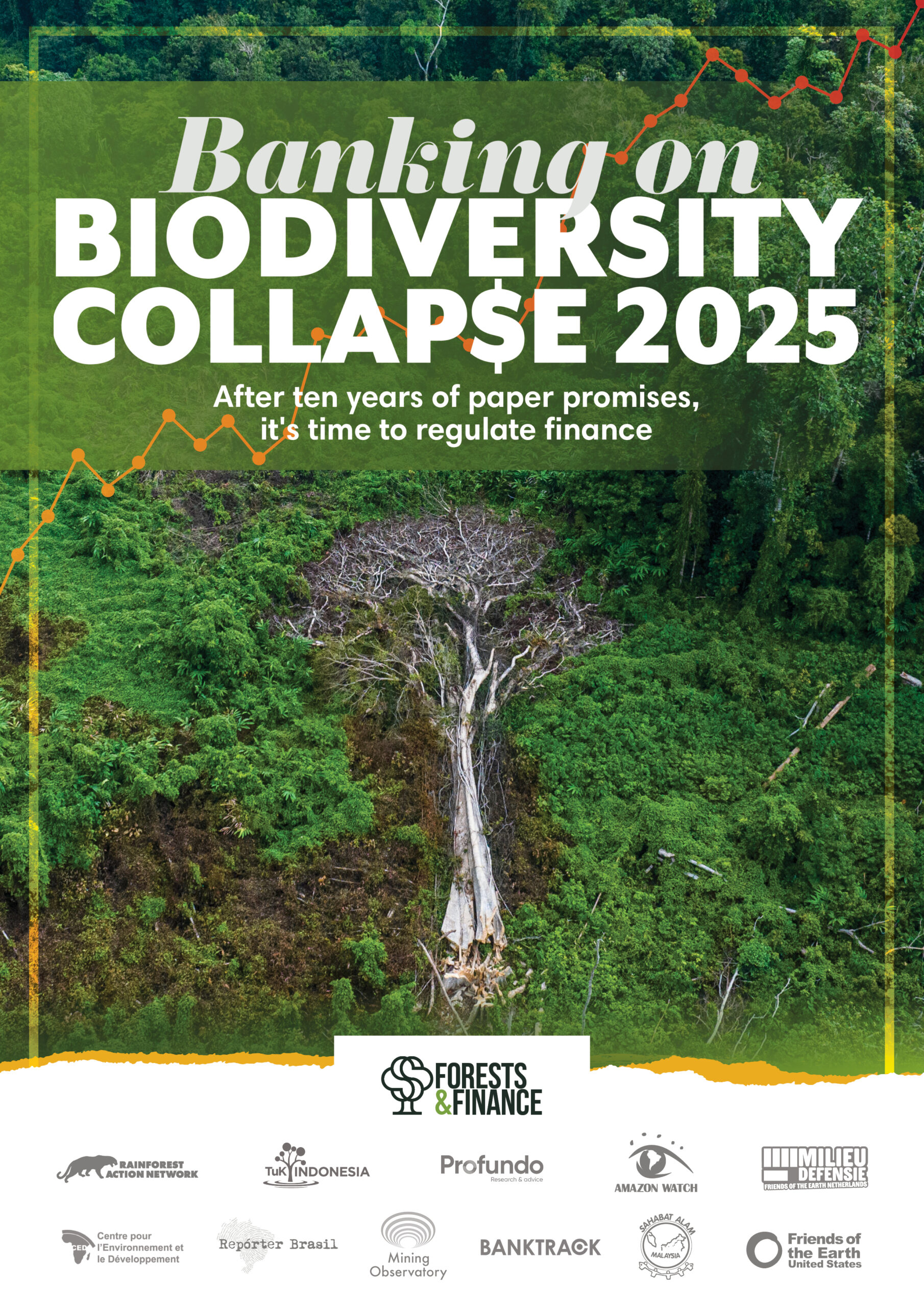Publications
New Report: Banking on Biodiversity Collapse 2025

The 2025 edition of the Forests & Finance report “Banking on Biodiversity Collapse: After Ten Years of Paper Promises, It’s Time to Regulate Finance“ finds that in the decade since the Paris Agreement was signed, forest-risk finance has surged.
Key Findings:
- Investors have increased their exposure to forest-risk commodity companies by USD 7.8 billion since the Paris Agreement, rather than withdrawing — signalling continued expansion, not retreat.
- As of September 2025, investors held USD 42 billion in bonds and shares across these companies — led by Permodalan Nasional Berhad (USD 3.8 billion), Employees Provident Fund (USD 3.5 billion) and Vanguard (USD 3.4 billion).
- Five financial centres dominate this financing: the United States (USD 15.9 billion), Malaysia (USD 9.0 billion), Brazil (USD 2.8 billion), Japan (USD 2.6 billion) and the United Kingdom (USD 1.9 billion).
- Banks have also increased their direct financing, providing USD 429 billion in loans and underwriting to tropical forest-risk sectors since the Paris Agreement — led by Banco do Brasil, Sicredi, Bradesco, Itaú Unibanco, Caixa Econômica Federal, Santander and Banco do Nordeste do Brasil.
- Forest-risk credit rose 35% between 2016 and 2024, growing from USD 35 billion to USD 47.1 billion — while banks publicly claimed to be aligning with climate and nature goals.
- Half of the top 30 banks actually increased their exposure, including extreme surges from Scotiabank (+717%), Bank Central Asia (+496%), Banco do Nordeste do Brasil (+295%) and Banco da Amazônia (+283%).